InterviewSolution
This section includes InterviewSolutions, each offering curated multiple-choice questions to sharpen your knowledge and support exam preparation. Choose a topic below to get started.
| 19201. |
Question : Complete the table using suitable term. _______trisomy 21 |
| Answer» SOLUTION :Down.s SYNDROME | |
| 19202. |
Question : Complete the table using suitable term Turner's syndrome . _______ Sterile female |
| Answer» SOLUTION :44 A + XO | |
| 19203. |
Question : Complete the table using suitable term . _______ 44 A + xxy |
| Answer» SOLUTION :Klinefelter.s SYNDROME | |
| 19204. |
Question : Complete the table using suitable term Turner's syndrome . _______ |
| Answer» SOLUTION :STERILE MALE | |
| 19205. |
Question : Complete the table by filling the gaps. |
|
Answer» SOLUTION :A- NEISSERIA Gonorrhoea B - AIDS C- Jaundice |
|
| 19206. |
Question : Complete the table. |
| Answer» SOLUTION :A-Only MALES , B - Only FEMALES , C- Both Males & Females | |
| 19207. |
Question : Complete the statements. (a) Alphonsa is a variety of ____________ . (b) Cayenne pepper is a variety of __________. |
|
Answer» SOLUTION :(a) MANGO (B) CAPSICUM |
|
| 19208. |
Question : Complete the molecular processes by naming them (a) DNA → DNA (b) mRNA→Protein ( c )RNA transcript → mRNA |
|
Answer» Solution :(a) Replication (b) TRANSLATION ( C )SPLICING |
|
| 19209. |
Question : Complete the food chain by filling the link X: Paddy rarr Grasshopper rarr Frog rarr X rarr Hawk |
|
Answer» KING cobra |
|
| 19210. |
Question : Complete the following, the name of scientists and their area in biodiversity conservation is given. |
|
Answer» SOLUTION :a. Edward Wilson b. GLOBAL SPECIES diversity c. Alaxander von HUMBOLDT d. Rivet POPPER hypothesis |
|
| 19211. |
Question : Complete the following sentence using the appropriate option. X is the term popularized by Y , a Z to describe combined diversity at all the levels of biological organization. |
|
Answer» X - ECOSYSTEM , Y - ALEXANDER von Humboldt , Z - Geologist |
|
| 19212. |
Question : Complete the following paragraph by selecting the corrects sequence of words from the options given below The Neanderthal man with a brain size of I lived near East and Central ii between iii years back. They used iv to protect their body and buried theri dead. |
|
Answer» `{:("(i)","(ii)","(iii)","(iv)"),(500c.c.,"Australia","2,00,000-1,40,000","CLOTHES"):}` |
|
| 19213. |
Question : Complete the following paragraph by selecting the correct sequence of words from the options given below. The Neanderthal man with a brain size of I lived near east and central (ii) between (iii) years back. They used (iv) to protect their body andduriedtheir dead. |
|
Answer» `{:(,"(i)","(ii)","(iii)","(iv)"),(,"500CC","AUSTRALIA","2,00,000-1,40,000","clothes"):}` |
|
| 19214. |
Question : Complete the following flow chart Pollen Mother cell rarr Pollen tetrad rarr |
Answer» Solution :Pollen Mother cell `rarr` Pollen tetrad `rarr`  In the process of MICROSPOROGENESIS by the process of meiosis pollen GRAINS (microspores) are PRODUCED from pollen mother cell. Microspores are produced in GROUP of four cells. It is called pollen tetrad  mature stage diagrams of pollen GRAIN As anthers mature and dehydrate, the microspores dissociate from each other and develop into pollen grains. When pollen grain matures two cells are produced in which the bigger cell is called vegetative cell and smaller cell is called generative cell |
|
| 19215. |
Question : Complete the following equation by identifying the microbes involved in bio remediation . PET Plastics overset(A)to terephthalic acid , Ethylene glycol Trichloro ethance overset(B)to Non - toxic ethane |
|
Answer» SOLUTION :A - Ideonella sakaiensis B - Dehalococcoides SPECIES. |
|
| 19216. |
Question : Complete the following chart by choosing correct option for A , B ,C and D |
|
Answer» |
|
| 19217. |
Question : Complete the following cross between a carrier female for colour blindness with a normal male and write the genotype and phenotype of progenies. X^(+)X^(C )xx X^(+)Y^(-) |
Answer» SOLUTION :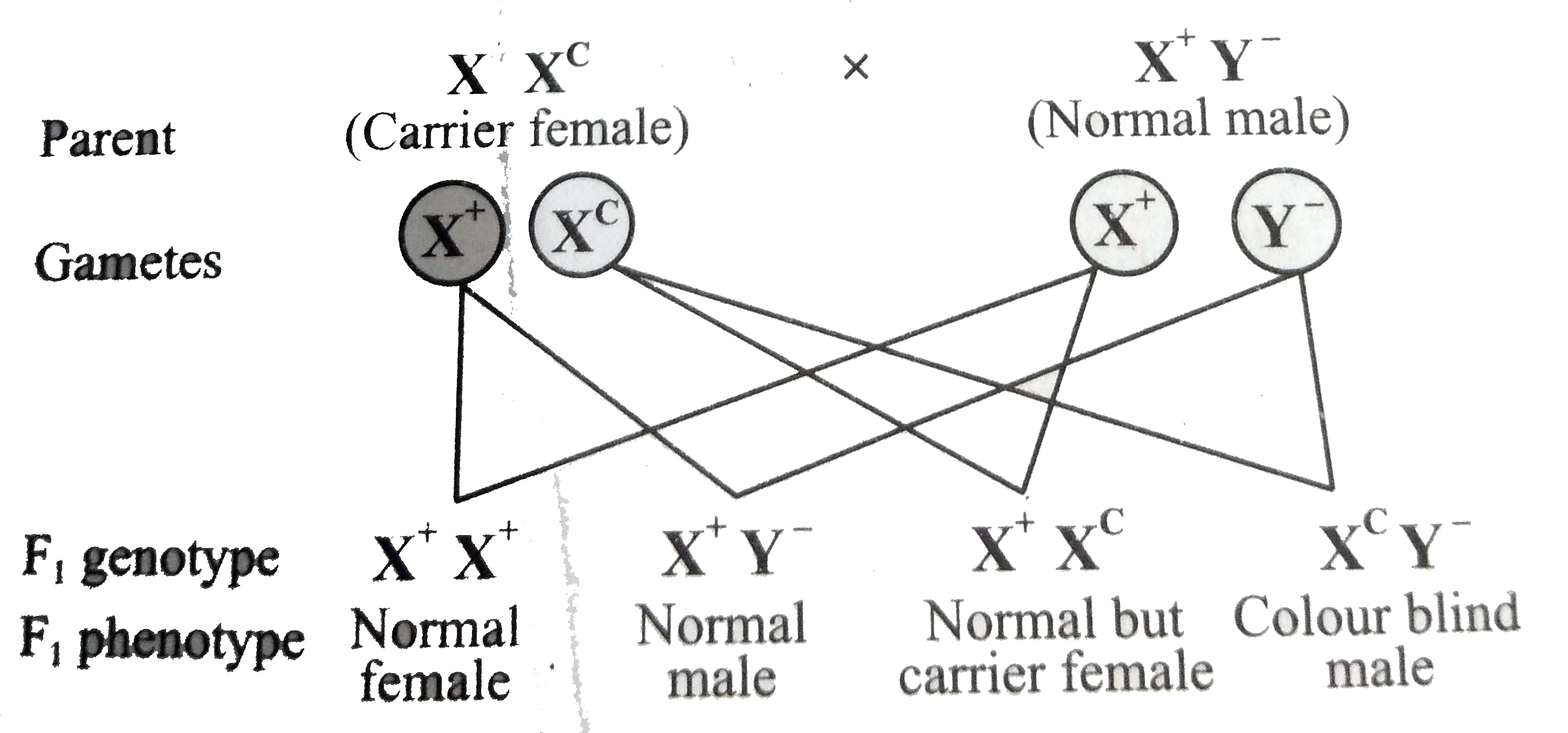
|
|
| 19218. |
Question : Complete the following cross. underset ("female")"AA ZW" xxunderset ("male")" AA Z Z " |
Answer» SOLUTION :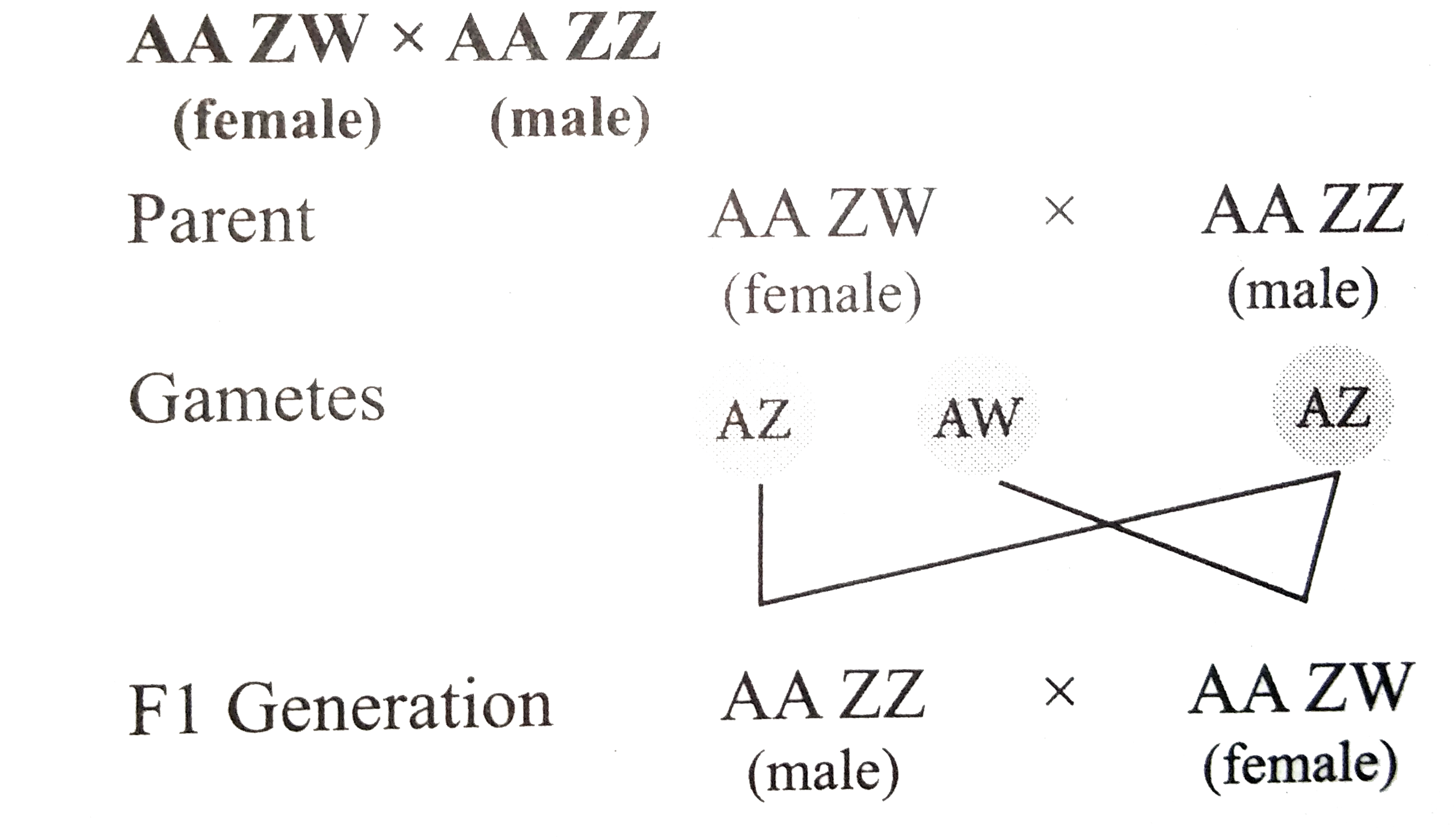
|
|
| 19219. |
Question : Complete the following. |
|
Answer» Solution :a. STAPHYLOCOCCUS `""` B. CYCLOSPORIN A c. Swiss cheese `""` d. MONASCUS purpureus. |
|
| 19220. |
Question : Complete the following 44 + XXY : Klinefelter's syndrome 44 + XO :_______ |
| Answer» SOLUTION :Turner.s SYNDROME | |
| 19221. |
Question : Complete the flowchart showing DNA finger printing. |
|
Answer» SOLUTION :a- RESTRICTION endonuclease b-Gel electrophoresis c - Alkali d - Baking e - AUTORADIOGRAPHY |
|
| 19222. |
Question : Complete the equation. (a) " Phenylalanine " overset (A) to " Tyrosine" (b) "DOPA" overset(B) to " Melanin " |
|
Answer» SOLUTION :(a) A = PHENYLALANINE HYDROXYLASE (B) B = Tryosinase |
|
| 19223. |
Question : Complete the analogy Amoeba: Simple binary fission::paramecium: Choose the correct option. |
|
Answer» LONGITUDINAL BINARY fission |
|
| 19225. |
Question : Complete linkage is observed in: |
|
Answer» MALE DROSOPHILLA sp. |
|
| 19226. |
Question : Complete linkage is found in |
|
Answer» MALE drosophila |
|
| 19227. |
Question : Complete linkage in Drosophila males |
|
Answer» Results in the ABSENCE of cross over |
|
| 19228. |
Question : Differentiate between complete linkage and incomplete linkage. |
Answer» SOLUTION :
|
|
| 19229. |
Question : Complementary, synthetic and random DNAs are used as |
|
Answer» Cluning VECTOR |
|
| 19230. |
Question : Competitive exclusion principle was given by |
|
Answer» AlIen |
|
| 19231. |
Question : Competition results in |
| Answer» Answer :C | |
| 19232. |
Question : Competition for food ,light and space is most servere between two |
|
Answer» closely RELATED species GROWING DIFFERENT niches |
|
| 19233. |
Question : Competition of species leads to |
|
Answer» Extinction |
|
| 19234. |
Question : Competition between species leads to |
|
Answer» EXTINCTION |
|
| 19235. |
Question : Competition and Mutualism. |
Answer» SOLUTION :
|
|
| 19236. |
Question : Compared with the gametophytes of the bryophytes, the gametophytes of vascular plants tends to be |
|
Answer» larger but to have smaller sex organs 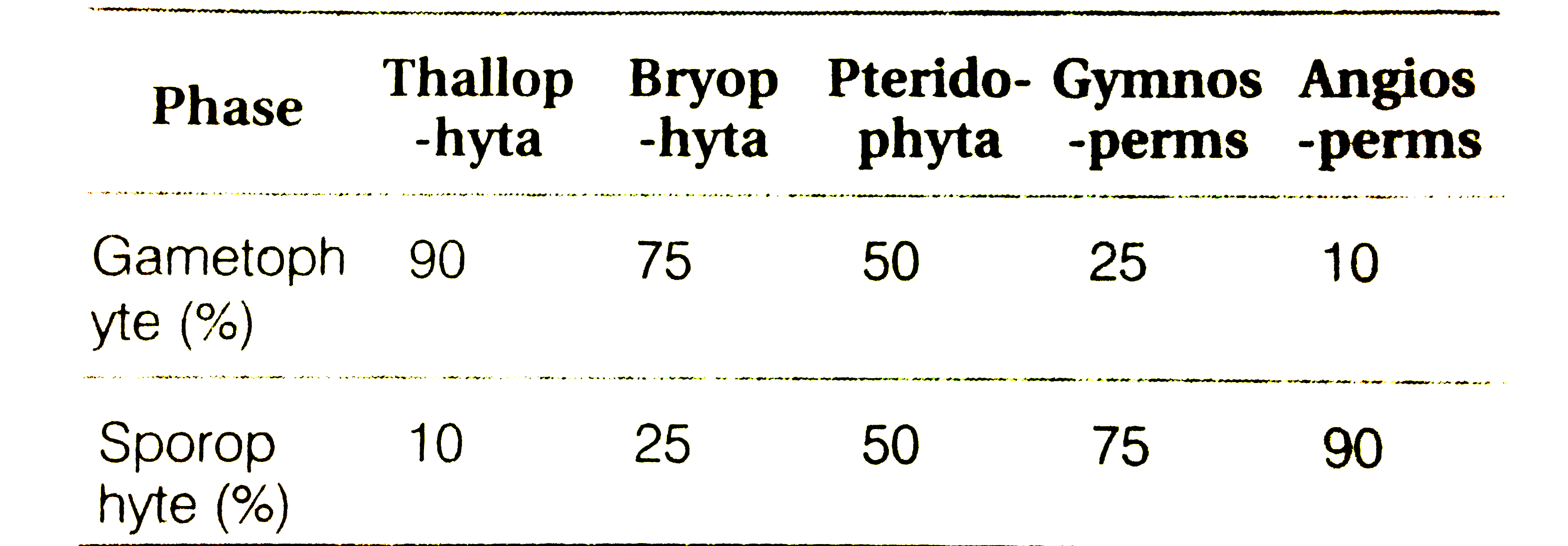
|
|
| 19237. |
Question : Compare the various types of blotting techniques. |
Answer» SOLUTION :
|
|
| 19238. |
Question : Compare the statements A with B. Statement A: Ranikhet disease is the disease of poultry Statement B: It is caused by a virus. |
|
Answer» Both the statements A and B are correct. |
|
| 19239. |
Question : Compare the pyramids of energy, biomass and numbers. |
Answer» SOLUTION : 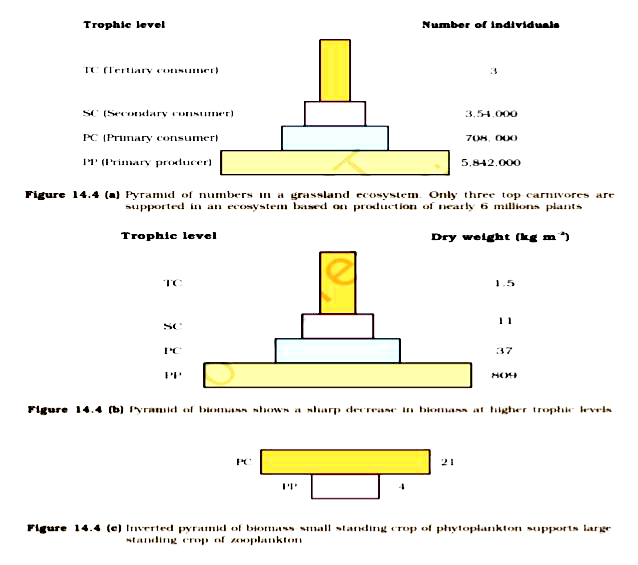 
|
|
| 19240. |
Question : Compare the mechanism of evolution proposed by Charles Darwin and Hugo de Vries. |
| Answer» SOLUTION :Hugo de VRIES- said mutation causes evolution, MUTATIONS can be LARGE/ occur suddenly//directionless, Darwin-said evolution occurs by natural SELECTION, variations are small/ gradual directional. | |
| 19241. |
Question : Compare the life style of people living in the urban areas with those of rural areas and briefly describe how the life style affects their health. |
|
Answer» Solution :PEOPLE think that the city life is better than village life. However, there are so manyadvantages as well as disadvantages of urban life and rural life Advantages of Urban (city)Life The city life is more comfortable as there are lot of facilities in the city. There are more opportunities for people to progress their lives and they have more opportunitiesfor making money. Children living in the city can get a good education, in the town than in the village. When aperson falls ill, there are good government and private hospital in the city to get treatment. There arelarge shopping complexes,banks, offices, cinemas, clubs, hospitals, etc., in and around the city for recreations. People in the cityhave better transport facilities than the village. There is electricity, highway, communication, telecommunication, plumb facilities in the city. So, people can lead acomfortable and enjoyable life in the city. Disadvantages of Urban (city) Life Although living in the city has many advantages there are some disadvantages too. The cost of living is very high in the city. Goods are expensive, no fresh air and pure water is present. The environment is polluted with dust, smoke, garbage and gases from FACTORIES. Most of the people who live in the city are corrupted, so there are lots of crimes in the city. Many thefts and murders often take place in the city. The city is ALWAYS busy and noisy. There are a lot ofvehicles and people in the road. The streets are DUSTY and unclean. So, it is hard to lead a healthy lifein the city. Advantages of Rural (village) Life The people of the village live in unity and peace. The villagers earn money enough for live Very hardly. So, they live in less competition with each other. They have more friends in the community. The village people always try to protect their traditional habits and culture. The village has clean air and the environment is very beautiful. The village has less noise and rush. So, the pollution is less. The village do not have lot of vehicles. So, roads are less DANGEROUS for driving or cycling. They can get fresh vegetables and fresh fruits. The environment of the village is pleasant and silent and it has scenic beauty. Disadvantages of Rural (village) Life People living in rural area have to face manyproblems like lack of good education, proper medical facilities, transportation,electricity, telecommunication, etc. Life style affects human health and cause many diseases due to specific food habits, work related posture or exposure to harmful radiation or substances, lack of physical exercise, mental stress, etc. Some life style diseases are cancer, alcoholism, heart diseases, etc. |
|
| 19242. |
Question : Compare the growth models for the population growth of a species. |
Answer» SOLUTION :There are 2 MODELS of POPULATION GROWTH : 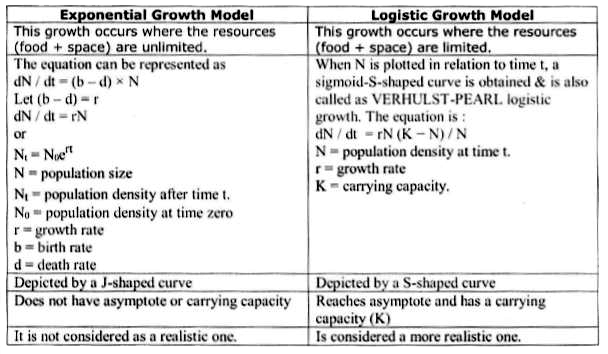
|
|
| 19243. |
Question : Compare the given pair and fill up the blanks . (a) Grasses : Wind pollination : : Zostera : ……………………. (b) Fragrant flower : Insect : : Light and nonsticky pollen : …………….. |
| Answer» SOLUTION :(a) WATER (B) . WIND | |
| 19244. |
Question : Complete the flow chart. |
Answer» SOLUTION :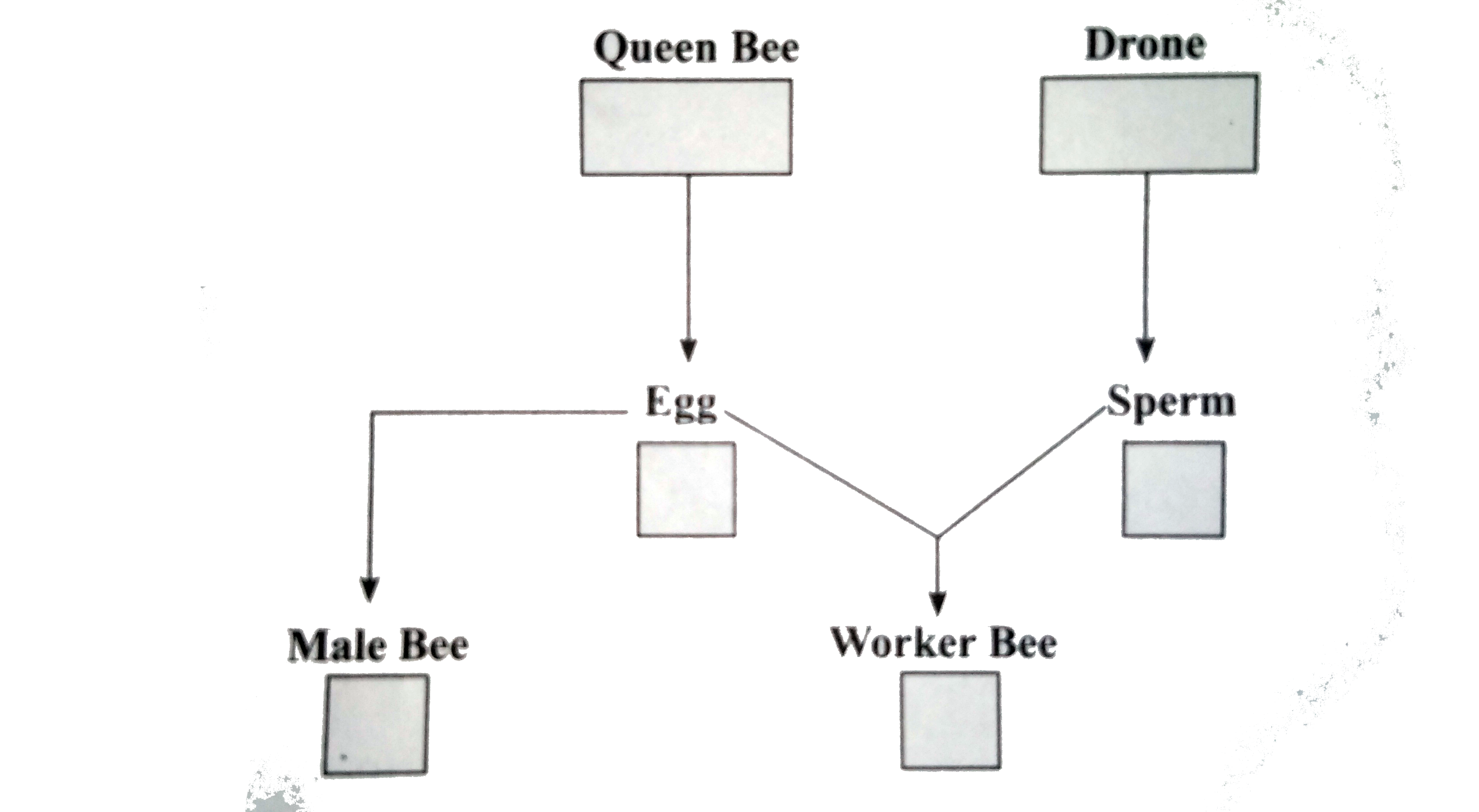 QUEEN Bee, Worker Bee- Diploid (2n) DRONES(Male Bee ),Egg , sperm - HAPLOID(N) |
|
| 19245. |
Question : Compare the columns and find out the correcrt combination {:(,"Column I",,"Column II"),((a),"Tridax",(i), "synandrous"),((b),"Dolichos",(ii),"Monadelphous"),((c), "Ceiba",(iii),"Syngenedious"),((d),"Cucurbita",(iv), "Polyadephous"),((v),,,"Diadelphouse"):} |
|
Answer» (a)-(IV), (b)-(v), (c)-(ii), (d)-(i) |
|
| 19246. |
Question : Compare schizogony with sporogony of plasmodium. |
Answer» SOLUTION :
|
|
| 19247. |
Question : Differentiate spices and condiments . |
| Answer» Solution :Spices are accessory foods mainly used for flavouring during food preparation to improve their palatability. Spices are aromatic plant products and are characterized by sweet or bitter taste. Spices are added in MINIMAL quantities during the cooking PROCESS. For example BLACK pepper. CONDIMENTS, on the other hand, are flavouring substances having a sharp taste and are usually added to food after cooking. For example, curry LEAVES. | |
| 19248. |
Question : Compare Redifferentiation with Dedifferentiation. |
|
Answer» Solution :`{:("Redifferentiation",,"Dedifferentiation"),("A process by which an already differentiated cell undergo further DIFFERENTIATION to FORM another cell type",,"A process of reversion of CELLS (differentiated cells) to meristem state LEADING to callus formation is called dedifferentiation it."):}` Differenticated cell `rarr` meristem state `rarr` New cells |
|
| 19249. |
Question : Compare relative dating with absolute dating. |
| Answer» Solution :Relative dating is used to determine a fossil by comparing it to SIMILAR rocks and fossils of known age. ABSOLUTE dating is used to dtermine the preciese age of a fossil by USING radiometric dating to MEASURE the decay of isotopes. | |
| 19250. |
Question : Compare point mutation with chromosomal mutation. |
| Answer» Solution :MUTATIONAL events that take place within individual GENES are CALLED GENE mutations or point MUTATION , whereas the changes occur in structure and number of chromosomes is called chromosomal mutation. | |